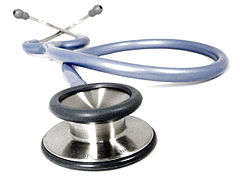I love when an article I read first thing in the morning gets me to think about itself all through my morning chores and then erupts into a blog post. So it was with this little gem in the statistical publications “Significance.” The author suggests making gambling safer by placing realistic odds estimates right on the poker machines in casinos. He even goes through the generation of the odds of winning and losing and how much based on really transparent assumptions.
I love when an article I read first thing in the morning gets me to think about itself all through my morning chores and then erupts into a blog post. So it was with this little gem in the statistical publications “Significance.” The author suggests making gambling safer by placing realistic odds estimates right on the poker machines in casinos. He even goes through the generation of the odds of winning and losing and how much based on really transparent assumptions. In fact, what he has in effect constructed is a cost-benefit model for the decision to engage in the game of poker on these machines. Seems pretty simple, right? Just a few assumptions about how long the person will play, some objective inputs about the probabilities, and PRESTO, you have a transparent and realistic model of what is probable.
In medicine, there is a discipline known as Medical Decision Making, and what it does is exactly what you see in the “Significance” article: its practitioners construct risk- (and, hence, cost-) benefit models for decisions that we make in medicine. To be sure,these turn out to be rather more complex, since the inputs for them have to come from a large and complete sampling of the clinical literature addressing the risks and the benefits. But that’s the meat; the skeleton upon which this meat hangs is a simple decision tree with “if this then that” arguments. In this way these models synthesize everything that we know about a specific course of action and put it together into a number driven by probability.
They usually go something like this. We have a group of women between 40 and 49 years of age with no apparent risk factors for breast cancer. What is the risk-benefit balance for mammography screening in this specific age layer? One way to approach this is to take a hypothetical cohort of 1,000 women who fit this description and put it through a decision tree. The first decision node here is whether to perform a screening or not. What follows are limbs stretching out toward particular outcomes. Obviously, some of these outcomes will be desirable (e.g., saving lives), while some will be undesirable, ranging from worry about false positive results to unnecessary surgery, chemotherapy, radiation, and even death. Because these outcomes are so heterogeneous, we try to convert everything to monetary costs per quality of life (quality because there are outcomes worse than death, as it turns out). But what underlies all of these models is the mathematics derived from clinical studies, not pulled out of thin air. This is the most useful synthesis of the best evidence available.
To be sure, MDM models are rather more complicated than the poker example. They require a little more undivided attention to follow and understand. Furthermore, I personally did not get a whole lot of exposure to them in my training, but perhaps that has changed. Like anything to do with probability, these models tend to be off-putting in a society that has consigned itself to wide-spread innumeracy. And doctors are certainly not immune from misunderstanding probability. Yet without them perceptions rule, and our healthcare becomes a reckless gamble. In our ignorance we collude to build profits that come with medicalizing small deviations from the perceived normality. Sadly, the primary interests that drive these profits are not usually doing so with probabilistic forethought either, but rather on the basis of red hot conviction that they are right.
Doctors and e-patients need to lead a radical transformation in how we handle decisions in healthcare. It is very clear that willful ignorance has not served us well, and we are all too easily led into panic about every pimple. Resilience can only come when we question our assumptions. Alas, our intuitive brain is almost certain to mislead us when faced with complex information; why else would we need explicit odds listed on poker machines? The absurd complexity of information in medicine deserves no less. It’s time to start the probability revolution!







